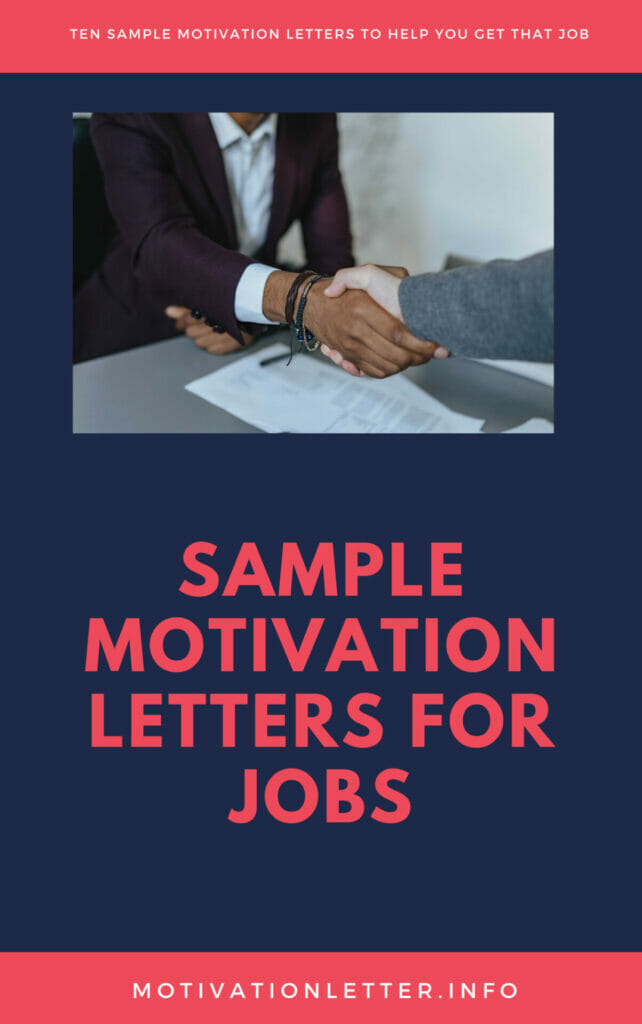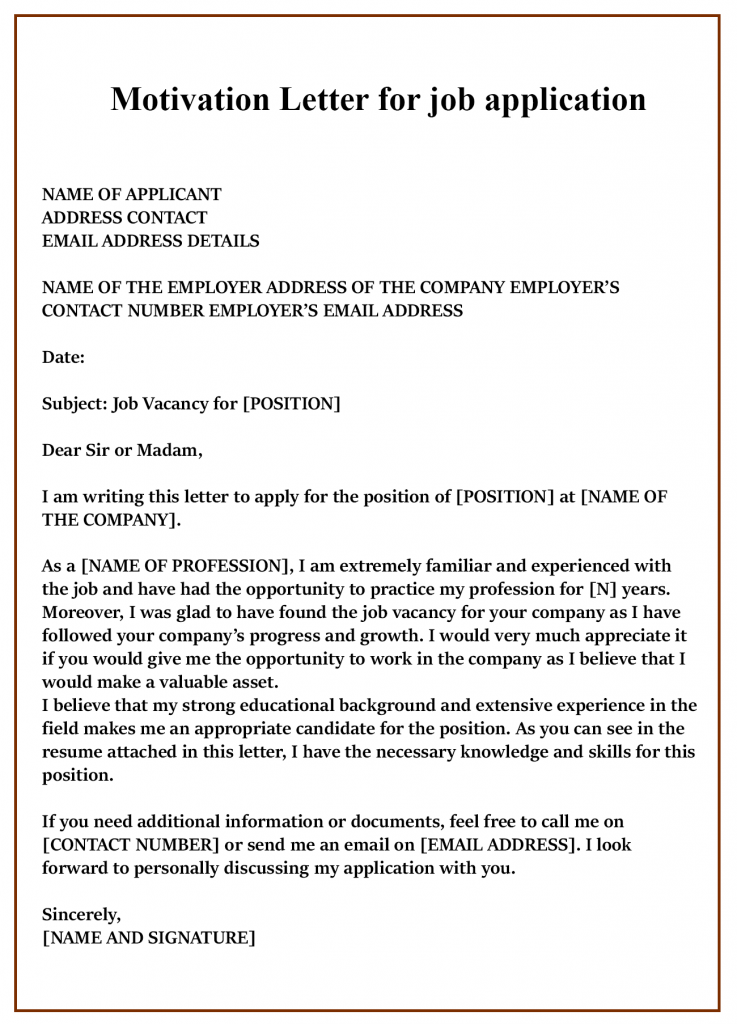A motivation letter for a Job is also known as the letter of motivation for employment, a motivational letter for a job offer, a cover letter, etc. For now, we will use the terms motivation letter and cover letter. They are similar concepts. A cover letter is typically for a job, and a motivation letter can be used for several purposes. The motivation letter is nothing more than a general letter that is attached to any other document or application to accompany them, like your resume or curriculum vitae. It gives you a chance to tell your story and hopefully show the hiring manager or recruiter why you would make a great candidate.
Some of the links on this page are affiliate links. If you click on the link and purchase the item, I will receive an affiliate commission at no extra cost to you. All opinions remain my own.
Getting the Most out of Fiverr
For a job, a motivation letter is very similar to a cover letter. Your goal is to write a letter explaining why you would make a great candidate for the hiring manager or team. An important consideration when applying for a job is that with each step, of course, you want to get hired, but you are trying to stand out from your competition and move to the next step in the process.
A motivation letter for a job application is included with your resume when you submit it. The resume includes your work history, education, etc. The motivation letter tells you more about yourself and why you are a great candidate.
You might hear and read discussions about why the cover letter is dead and see statistics showing as few as 18% of recruiters read. Other studies show the numbers as much higher, with as many as three-quarters of hiring managers reading them if they are included. Given that only about a third of applicants send them in, just because you took the time to send in a motivational letter for a job application, you can stand out. Write an outstanding one that improves your chances of being hired.
Motivation letters and cover letters also give you the chance to explain things that might be different about your background. This can be very helpful when your application doesn’t look as strong as it might with more color in your story.
For example, a motivation letter for a job application can be used to do things like
- Explain Gaps in Your Work History – Maybe you took time off to care for a sick relative, hike across the Himalayas, or just find yourself. These things could appear in a job application as something to avoid, but a good motivation letter and explanation can make these strengths. They can make great stories and have great discussions in an interview. They can also make a recruiter or hiring manager curious to hear more.
- Explain Why You Are Changing Careers – If you have been down one career path and are now exploring another, this is something you might need or want to explain more.
- Describe Your Career Objectives – Showing your drive and ambition can be very exciting for a recruiter or hiring manager.
- Highlight Personal and Professional Achievements – A great motivation letter can be a good opportunity to talk about accomplishments that can help you be a better candidate or that explain you as a person and your goals.
Whatever your motivation, a motivation letter for your job application is a great opportunity to highlight and describe you as a person, a candidate, and your history. You can tell them in your own words why they should hire you and why you would make a great candidate. A job application and a resume can’t do that for you.

Contents
10 Sample Motivation Letters for Job Applications
This is a set of ten sample job motivation letters for you to use in creating a powerful motivation letter for that dream job.

Motivation Letter for Job Opening
This is an editable version of our Motivation Letter for a Job. Use this version to customize the letter for your situation. Make sure to show your strengths and why you would make a great candidate for the position.
The basic purpose behind writing a motivational letter is to persuade the recruiter or hiring manager that you are suitable for the job you are applying for. It also denotes your skills and knowledge, which can help HR to select you for the applied position. Many people cannot differentiate between a cover letter and a motivational letter they feel that they both are similar, but there is a huge difference between both of them.
How to Write a Motivation Letter for Job Application
The first thing we need to do is to determine what a recruiter or hiring manager is looking for. This will allow us to write the best motivation letter for your job application. You want to start by looking at the job, its requirements and its responsibilities and see how you compare.
1. Determine the Job Expectations – Learn About the Job
Any job description should have a list of the requirements for the job. Go through these and write them down. This gives you an idea of what the hiring manager is looking for.
When you read through the list of job duties, are there any other requirements or suggestions included? Write these down as well.
Lastly, go onto LinkedIn or just search the internet for people with similar positions at this or other companies. Look through their background and write down any education, job experiences, or other traits that you find common to them.
You now have a list of things that a hiring manager may be looking for.
Which Traits Do You Have?
Write down in a few words how you meet any of the requirements. These could be personality traits, education, job experience, or even personal or volunteer experiences.
Review your CV or resume and look for accomplishments, projects, responsibilities, or other activities in your background that can help show that you are the right person for the job. You want to make as long a list as possible.
Why Do You Want the Job?
Write down why you want the job and what you hope to achieve. Consider your life experiences, personal goals, interests, and motivations.
Research the Company
Research the company and try to understand the candidates they look for, their history, and their achievements. These might also weigh in on why you want the job or why you are good for the job.

2. Start Writing Your Motivation Letter for Job Application
A good technique for writing your letter is a five-paragraph strategy. It should be one page because many recruiters won’t read more than that anyway. This is where our work begins because we need to get everything that we just wrote down into about five paragraphs:
- Introduction – This is usually pretty straightforward, introducing yourself. You need to include the position and company name. If you want, you can include one or two sentences about your excitement about the position.
- Body – This is the meat of the letter. Usually, in three paragraphs, you can usually cover how you are a great candidate, any unusual or explanatory portions, and any unique background items or your future goals.
- Conclusion – Close the letter with a thank you, and your excitement, and you can include a respectful call to action. “You can call me at … to discuss more how I can contribute to the team.”
Sometimes, it’s easiest to write the cover letter out of order. Start with the body, showing why you think you are a strong candidate or explaining gaps. Then, you can circle back to the introduction and conclusion with a one or two-sentence summary of your body.
It’s a good idea to start with an outline before you start writing.
Letter Structure
You want to keep your letter to one page. Typically, this will mean one short paragraph each for the introduction and conclusion and then one to three paragraphs for the body. So, three to five paragraphs is a fairly normal letter. More than one page, and the recruiter isn’t likely to read the second page (and maybe not that far.) You want to get their attention quickly. They are busy and won’t read much.
It’s also a good idea to address the letter to someone. Usually, this will be the recruiter or the hiring manager. A letter labeled “to whom it may concern” or other generic addresses doesn’t make a strong connection with a reader. It’s not horrible, but much better to address it with someone.
Even though we call this a motivation letter or cover letter, it’s not always a letter these days. You might send an email. We include a letter format because many of us rarely send written letters and we want to help you with that. There are just a few small changes to change it to an email.
- Use the Same Verbiage – You can use the same letter for the letter itself.
- Remove the Addressing – Do not send the whole letter as an email. Remove any address blocks.
- Send Separate Emails – You may have a couple of email addresses. Don’t send one motivation letter for a job application to multiple people simultaneously. Send separate emails and address them separately. So, send one to Mrs. Smith, one to Mr. Amat, etc. Change the greeting each time. You might even make some introduction changes if you’ve spoken to anyone.
Overall, the changes are minor but important when you send a cover letter as an email.
Introduction
The introduction is a simple paragraph. You want a few sentences introducing yourself and the position that you are applying to. You can also include one or two sentences summarizing your strengths for the position.

10 Sample Motivation Letters for Job Applications
This is a set of ten sample job motivation letters for you to use in creating a powerful motivation letter for that dream job.

Motivation Letter for Job Opening
This is an editable version of our Motivation Letter for a Job. Use this version to customize the letter for your situation. Make sure to show your strengths and why you would make a great candidate for the position.
Body
The body does most of the work for the letter. Start by reviewing the information you gathered above. Then write 1-3 paragraphs on why you are a great candidate for this position. You can include past work experience, past projects, or other similar achievements. It’s terrific to show how you can do the job rather than send another version of your CV. Stories and other ways to connect with the reader or great.
You may also need to include any information on things that may cause questions on your CV. For example, if you have a gap in your work history or are applying for a job that is completely different from what you’ve had in the past. Explain the context and an explanation for these inconsistencies in your work history. Your goal here is to get an interview where you can explain these things in more depth.
“I had to take a year off to take care of my mother. She was terminally ill for a little over a year. My siblings and I each took turns with her but I was the only one without a family and I had the ability to take more time off. While it meant I couldn’t work full-time, now that she has passed, this is time that I would never be able to make up for and I’ll treasure the time I had with her.
I did everything I could to stay up on our industry during that time, reading about current events and I even did a couple of small contractor projects to keep my skills up. I’m looking forward to getting back at the work that I love.”

3. Review Your Letter
Before sending your letter, read it carefully for any typos, grammatical mistakes, or inconsistencies. Any experience you mention in your motivation letter needs to match what’s on your application. You also want to ensure that your letter makes sense and is ready to go.
Typos and grammatical mistakes can harm you instead of help you. It reflects badly on your work ethic and your attention to detail. You don’t want that to happen, so review your letter carefully. It can be a good idea to have someone else read it who hasn’t been staring at it for hours. We tend to fix the mistakes in our minds.
A great tool for this is Grammarly. Grammarly is a tool that takes the spell checking of Word or Google and makes it much better. It checks for common grammatical mistakes and common word confusion (e.g., “there” versus “there.” That’s in the free version! If English is not your primary language or you aren’t a strong writer, it might be worth looking at Grammarly Premium. It will also help you with the tone of your writing, improved phrasing, and readability. Well worth checking out!
Above all else, ensure that your letter is honest and backed up by your CV or resume. You may be asked about it in the interview. It’s okay to put yourself in a positive light, that is expected, but you need to be honest. Anything that isn’t true is likely to show up in an interview; even if they can’t prove that it’s not true, it can cause a recruiter to doubt you.
Download Motivation Letter For Job in PDF

Apart from this, a cover letter is only used when you apply for any job. While sending your CV, you need to present a cover letter also in which you state the position for which you are going to apply and have to explain why you are suitable for the applied position. In short, a cover letter answers the question, “Why you.” So this is the basic difference between a motivation letter and a cover letter. In this article, we have tried to guide you to make writing your motivation letter for a job easier. Writing a cover letter can be tough; getting started is the hardest part. Our goal is to help you out with that.
This is not the only way to write a cover letter. Some other views and strategies work. You need a method to help you write an effective cover letter for your job application. That’s our goal here. Good luck with your job hunt. Please let us know how it goes.
Other Resources to Help With Your Motivation Letter for a Job
We have written this guide to help you write your letter. Sometimes, we get asked for more help from our readers. Unfortunately, we don’t have the resources for that, but we want to give you any help we can.
We offer a template for a motivation letter for a job application that you can download and use to get started. It has a good format that you can use. It works in Microsoft Word format and in Google Docs. We’ve designed it to be very easy and very affordable.
Probably the best resource we have found for such help is to look on Fiverr to hire someone. Fiverr is a marketplace where you can hire someone for a specific project. They offer different projects at set prices that you can hire them for. This link will take you to a search for freelancers that do motivation letters specifically. We can’t offer any specific names on there because the freelancers change. We do have an article that gives you some pointers on finding the right person for you, though.
Example Motivation Letter for a Job – Example
Below is a sample motivation letter we created to help you get started. We also offer an editable version here.
This is to help you with the format and concept. You can use this to get started.

Download Sample Motivation Letter for Job Application PDF
Frequently Asked Questions
How Do I Get Started Writing a Motivational Letter for a Job Application?
We offer a template to help you get started. It’s intended to help give you some ideas and a format to start. You will want to write down all the ways that you meet the job requirements and why you would make an outstanding candidate.
You can also purchase a sample motivation letter for job application in Word format here.
I’m a Horrible Writer. How Can I Write the Best Motivational Letter for a Job Application?
You can certainly use our template and our guidance. We have also found Fiverr to have some great resources to help you write an amazing motivational letter for a job.
Motivation Letter for a Job Summary
We hope you’ve enjoyed our article on writing a motivation letter for a job application.
Our goal was to provide you with the best guidance and resources we could when you need to write the best motivational letter for a job application. We’ve provided you with a sample motivation letter in pdf format and you can also download a Word/doc version of the sample motivation letter.
For even more options, we also introduced a collection of the best motivation letters for a job to let you look at many example motivation letters and pick what works best for you.
We have also introduced you to some great resources like Grammarly to help you with your writing or Fiverr where you can hire someone to write that motivation letter for you.
With all of these resources, we hope that we have set you up for the best chance possible for your job hunt. Good luck!

This is a great post! I have been looking for a good motivation letter for job applications and this is perfect. Thank you for sharing!